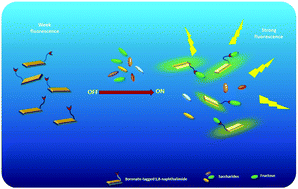Fructose recognition using new “Off–On” fluorescent chemical probes based on boronate-tagged 1,8-naphthalimide
Abstract
It has recently been found that hereditary fructose intolerance (HFI) alongside the blood glucose level can be an important indicator in diabetes or some metabolic disorders. Over time, fluorescent organic molecules have grown in popularity for selective recognitions of a wide range of analytes. This work introduces new synthesized molecules based on boronate-tagged 1,8-naphthalimide with a planar structure and high fusion loops for rapid optical detection of fructose. Boronic acids which form five-membered boronate esters with diols have become increasingly popular in the synthesis of small chemical receptors. Two new water-soluble fluorescent selectophores have been successfully synthesized and their selectivity has been studied in sensing saccharides. The synthesized selectophores indicated selectivity toward fructose compared to other tested saccharides within the range of 0.16 to 50 mM at the physiological pH 7.4. The designed fluorescent probes were used to measure the percentage of fructose in fructose corn syrup. The results revealed that the (2-(((2-((7-oxo-7H-benzo[d,e]benzo[4,5]imidazo[2,1-a]isoquinolin-3-yl)amino)ethyl)amino)methyl)phenyl)boronic acid (NONB) probe was able to determine the concentration of fructose satisfactorily, suggesting that this probe can potentially be applied for quantitative detection of fructose in real samples.



 Please wait while we load your content...
Please wait while we load your content...